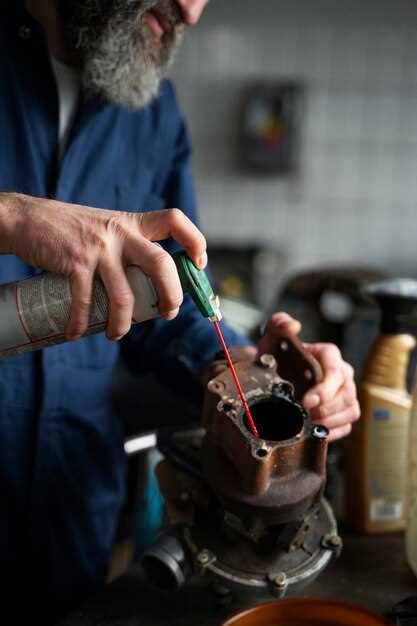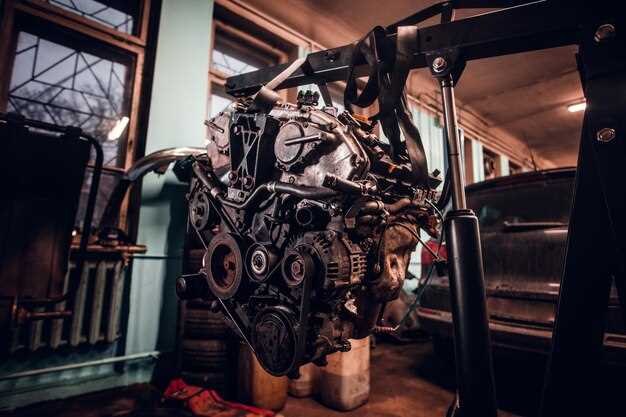
The BMW inline-6 engine has built a reputation for its smooth operation and robust performance. Whether you’re a seasoned mechanic or a passionate car enthusiast, rebuilding this iconic engine can be a rewarding yet challenging project. Understanding what to expect during the rebuilding process is crucial for ensuring a successful outcome. This guide will walk you through the essential steps and considerations involved, preparing you for what lies ahead.
Rebuilding an inline-6 engine involves more than just replacing worn-out parts; it requires a comprehensive approach to ensure longevity and efficiency. From assessing the engine’s condition to meticulously inspecting each component, every aspect plays a vital role in the overall restoration. Knowledge about the specific engine model is key, as each variant may present unique challenges and requirements.
Furthermore, you’ll need to invest time in gathering the right tools and parts, as well as understanding the intricacies of engine assembly. Be prepared to encounter technical challenges and problem-solving situations that will test your skills and patience. However, with careful planning and attention to detail, the rebuild can provide an opportunity to improve engine performance and personalize your BMW, making it a true reflection of your automotive values.
Rebuilding Your BMW Inline-6 Engine: What to Expect
Rebuilding a BMW inline-6 engine is a significant undertaking that requires careful planning and execution. Understanding what to expect during this process can help ensure a smoother experience.
1. Preparation and Planning
Before diving into the rebuild, thorough preparation is essential. Here are the key steps:
- Research your engine model and specifications.
- Gather necessary tools and equipment.
- Purchase a complete rebuild kit, including gaskets, bearings, and seals.
- Create a clean, organized workspace to manage parts effectively.
2. Disassembly Process
Carefully taking the engine apart is crucial to avoid damage. Follow these guidelines:
- Label and keep track of all components to streamline reinstallation.
- Document the condition of each part.
- Use the appropriate tools to avoid stripping bolts and damaging gaskets.
3. Inspection of Components

After disassembly, inspect each part for wear and damage:
- Check cylinder head for cracks and warping.
- Examine pistons and rings for signs of wear or scoring.
- Inspect crankshaft and camshaft for any irregularities.
- Evaluate bearings and seals for signs of deterioration.
4. Machining and Refinishing
Some components may require machining to restore functionality:
- Decking the cylinder head and block to ensure a proper seal.
- Reconditioning or replacing valve seats and guides.
- Polishing the crankshaft for a smooth surface.
5. Reassembly
Reassembly should be done methodically:
- Follow a step-by-step guide or service manual specific to your engine.
- Use new gaskets and seals to prevent leaks.
- Torque bolts to manufacturer specifications to avoid future issues.
6. Testing and Break-in Period
After rebuilding, testing the engine is crucial:
- Check for leaks and ensure all systems function correctly.
- Run the engine for a brief period, monitoring for unusual sounds.
- Follow a break-in procedure to ensure longevity.
7. Final Thoughts
Rebuilding your BMW inline-6 engine can be a rewarding experience if approached with the right knowledge and preparation. Pay attention to details, follow service manuals, and don’t hesitate to seek professional help if necessary.
Preparing Your Workspace and Tools for Engine Rebuild

Before embarking on the journey of rebuilding your BMW Inline-6 engine, it is essential to prepare your workspace and gather all necessary tools. A well-organized environment and the right equipment can significantly enhance the efficiency and success of your project.
Workspace Setup
Choose a clean, well-lit area with ample space to accommodate the engine and all components. Ideally, a garage or dedicated workshop with a concrete floor is best, as it allows for easy cleaning and durability. Make sure the area is free from clutter and distractions to help maintain focus during the rebuild process.
Use a sturdy workbench for assembly tasks, equipped with a bench vise to hold parts securely when needed. Ensure that you have all necessary safety equipment, including gloves, goggles, and ear protection, readily accessible to protect yourself while working.
Organizing Parts
As you disassemble the engine, utilize labeled containers or bags to keep track of small parts, including bolts, nuts, and seals. This will prevent confusion during the reassembly process and save time searching for components later. Take photos or notes of the assembly layout for reference when putting everything back together.
Essential Tools
Gather the following essential tools before starting the rebuild:
- Socket set: A complete metric socket set is crucial for removing and tightening bolts securely.
- Torque wrench: Ensures that all fasteners are tightened to manufacturer specifications.
- Wrenches: Both open-end and box-end wrenches are necessary for various fasteners.
- Screwdrivers: A range of flathead and Phillips screwdrivers will be needed for various tasks.
- Plier set: For gripping and pulling small parts.
- Engine hoist: To safely remove and install the engine from the vehicle.
- Camshaft locking tool: Specific to BMW engines for maintaining timing during assembly.
- Measuring tools: Calipers and micrometers to accurately measure tolerances and clearances.
- Oil filter wrench: Essential for changing the oil filter during the rebuild.
Additional Supplies
Don’t forget the consumables such as engine oil, coolant, gaskets, and seals. Having these items on hand will streamline the process and help avoid delays due to last-minute trips to the auto parts store.
Conclusion
By properly preparing your workspace and gathering the necessary tools and supplies, you set the stage for a successful BMW Inline-6 engine rebuild. A focused environment and the right equipment not only improve efficiency but also instill confidence as you tackle this complex and rewarding project.
Step-by-Step Process of Disassembling the Inline-6 Engine
The disassembly of an inline-6 engine requires careful planning and execution to ensure that all components are preserved and reassembled correctly. Follow these steps to efficiently take apart the engine.
1. Preparation: Before starting, gather all necessary tools, including sockets, wrenches, screwdrivers, and pliers. Make sure to have a clean workspace and ample lighting. Refer to a service manual specific to your engine model for guidance.
2. Disconnect the Battery: Ensure safety by disconnecting the negative terminal of the battery to prevent accidental electrical shorts during disassembly.
3. Remove the Intake and Exhaust Manifolds: Start by removing the air intake assembly, followed by detaching the intake manifold. Next, disconnect the exhaust pipes from the exhaust manifold, and then remove the exhaust manifold itself. Label all components and bolts for easy reinstallation.
4. Drain Fluids: Drain the engine oil and coolant prior to disassembly. This is crucial to avoid spills and contamination during the process.
5. Take Off the Accessories: Remove any accessories attached to the engine, such as the alternator, power steering pump, and air conditioning compressor. Note the connections and mounting points for reassembly.
6. Remove the Timing Cover: Detach the timing cover by unscrewing the bolts that secure it. Be careful as you will need to maintain the timing components layout for proper installation later.
7. Disassemble the Timing Chain/Belt: Remove the timing chain or belt along with the sprockets or gears. Take photos or notes on the alignment to assist with reassembly. Pay attention to tensioners or guides that may need removal as well.
8. Remove Cylinder Head: Loosen the cylinder head bolts in the specified sequence to prevent warping. Once all bolts are removed, lift the head off carefully. Inspect for any gasket material that may need cleaning off the block.
9. Disconnect the Pistons and Connecting Rods: Remove the oil pan and then disconnect the connecting rods from the crankshaft. Carefully push the pistons out of the cylinders, ensuring not to damage the cylinder walls.
10. Remove the Crankshaft: After all pistons and rods are removed, unscrew and lift out the crankshaft. Examine the main bearings and other components for wear or damage.
11. Inspect and Clean: Once disassembled, clean all components thoroughly. Look for signs of wear, cracks, or other damage that could affect performance. This step is essential in determining what needs to be replaced or repaired.
Following these steps will prepare you for a successful rebuild of your BMW inline-6 engine. Document each phase to streamline the reassembly process, ensuring everything returns to its correct place and function.
Identifying and Addressing Common Issues During Reconstruction
Rebuilding an inline-6 engine can be a rewarding yet challenging process. During reconstruction, several common issues may arise that require careful identification and resolution to ensure the engine functions optimally once reassembled.
One prevalent issue is excessive wear on engine components, particularly bearings and cylinder walls. It’s crucial to inspect these parts for scoring or wear patterns, which can indicate a need for replacement. Using a micrometer to measure tolerances will help in determining if the components are within acceptable limits.
Another common problem is gasket failure, leading to leaks of oil or coolant. Ensure that all gasket surfaces are clean and free of debris before installation. Consider using high-quality gaskets and sealants to prevent leaks in the future. It is also advisable to check for any warping in the cylinder head or engine block, as this can compromise the seal.
Fuel system issues may arise during the reconstruction, particularly with fuel injectors and pumps. Clogged injectors can significantly reduce engine performance. Cleaning or replacing injectors along with testing fuel pressure will ensure the fuel system operates efficiently.
Cooling system failures are also common, often stemming from a malfunctioning thermostat or water pump. Inspect these components during the rebuild and consider replacing them if there is any sign of wear or corrosion. Flushing the cooling system before reassembly can also prevent future overheating problems.
Finally, ensure that the timing components are in good condition. A worn timing belt or chain can lead to serious engine damage if it fails. During reconstruction, it’s prudent to replace these components to avoid future issues. Additionally, verify that the timing marks are properly aligned to ensure accurate engine timing once reassembled.
By addressing these common issues during the reconstruction process, the longevity and performance of the BMW inline-6 engine can be significantly enhanced, leading to a successful rebuild.




